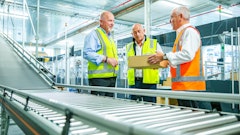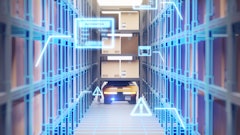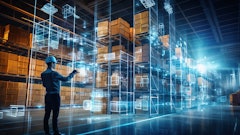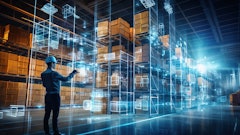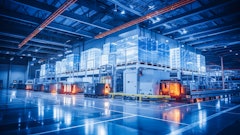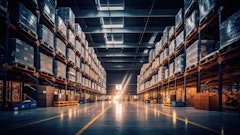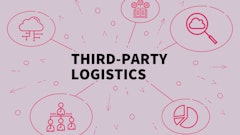
In the world of logistics, where efficiency is crucial for cost management and organization success, artificial intelligence (AI) has become a game-changer and a key enabler. With AI integration in supply chain management, businesses can streamline transportation costs, minimize empty miles, introduce process efficiencies and have more visibility for every stage of the transportation cycle.
The benefits of increased visibility, improved productivity and reduced wait times, especially within warehouses facilities and distribution centers, have propelled the market for AI in the supply chain to an estimated value of $10 billion by 2025 and showcase AI’s potential in the revolution of logistics operations.
Real-Time Insights
AI algorithms, coupled with robust data, can provide comprehensive, real-time visibility across intricate supply chain networks. By integrating and organizing data from various sources —suppliers, manufacturers, logistics providers and retailers—AI enables businesses to:
- Maintain Effective Inventory Levels: AI helps companies to keeps a watchful eye on inventory levels via predictions, ensuring that stock is neither too high nor too low. This prevents overstocking or stockouts, optimizing warehouse space and reducing costs.
- Monitor Shipments: From raw materials to finished products, AI enables the monitoring of the movement of goods. It can predict and detect delays, reroute shipments when necessary and ensure timely delivery or alert on potential future exceptions.
- Identify Bottlenecks: AI serves as an important engine to identify bottlenecks in the supply chain. Whether it’s a congested port, a delayed production line or a shortage of truck capacity, AI can flag these issues for immediate attention.
- Swift Responses to Demand Changes: When demand spikes or dips unexpectedly, AI can help logistics managers adapt swiftly. It can help adjust production schedules, reroutes shipments and reallocates resources to meet changing market dynamics.
This enhanced visibility and predictions isn’t just about data or visibility—it’s about empowering proactive decision-making. Armed with real-time insights and recommendations, shippers can:
- Mitigate Risks: AI can predict potential disruptions before they escalate. Whether it’s a natural disaster, a labor strike, a supplier issue or a traffic congestion, early detection allows businesses to take preventive measures and prepare accordingly.
- Anticipate Customer Needs: Real-time data helps shippers anticipate customer demand. When a sudden surge in orders occurs, AI ensures that warehouses are prepared to meet the challenge.
Building Trust Through Transparency
Customers crave transparency. They want to know where their orders are, how long delivery will take, and whether there are any potential delays along the way. AI delivers on this front. Shippers armed with real-time data can provide accurate updates to customers. No more vague delivery windows—customers receive reliable information and can prepare accordingly. Transparency fosters trust. When customers know what’s happening behind the scenes, they feel more satisfied and confident in the logistics process.
Automating Processes and Reducing Wait Times
The gatehouse at warehouses or distribution centers are often the cause for bottlenecks and slowdowns at large facilities. When the driver pulls into a lot, the gate guard goes through the driver’s paperwork, verifies the information, confirms the driver is on time and then must communicate with the warehouse to figure out where to direct the driver.
Manual processes at the gate slow things down and can generate errors. AI changes the game and makes the whole process of checking-in and getting a truck to the yard is faster, reliable and more efficient.
AI-powered check-in systems automatically process truck arrivals, eliminating the paperwork shuffle. The advanced AI technology identifies trucks via data-extraction video programs and offers streamlined check-in processes. This technology tackled two significant challenges. It reduced dramatically the bottleneck issue at the gate, where carriers often faced extended wait times, leading to inefficiencies in their operations.
Leveraging CCTV cameras that are already present in many warehouse gates, machine learning and AI capabilities automatically detect and record trailer numbers and license plate numbers and match it to the pre-scheduled appointments. Traditionally, this information was captured manually with pen and paper or human input into a computer terminal. Now, the moment a truck arrives, the system extracts relevant information and automatically populates fields in the digital record for a given load.
Thanks to AI, gate wait times have dropped by an average of 30%. Carriers get to the warehouse faster, and shippers save money due to less downtime and increased efficiencies. Existing cameras in warehouse gates detect and record trailer numbers and license plates. No more manual mix-ups or inaccuracies. This automation improves internal productivity and eliminates errors. Warehouse operations run smoother, and carriers experience fewer delays.
AI’s Logistics Revolution
The integration of AI technologies and machine learning algorithms into transportation lifecycle and warehouse management represents a shift in how logistics operations are conducted. With heightened visibility, accurate predictions, robust recommendations and enhanced process transparency, AI is poised to revolutionize the supply chain industry. Continued advancements in AI technology promise even greater innovations to drive further efficiencies and reshape the future of transportation.










